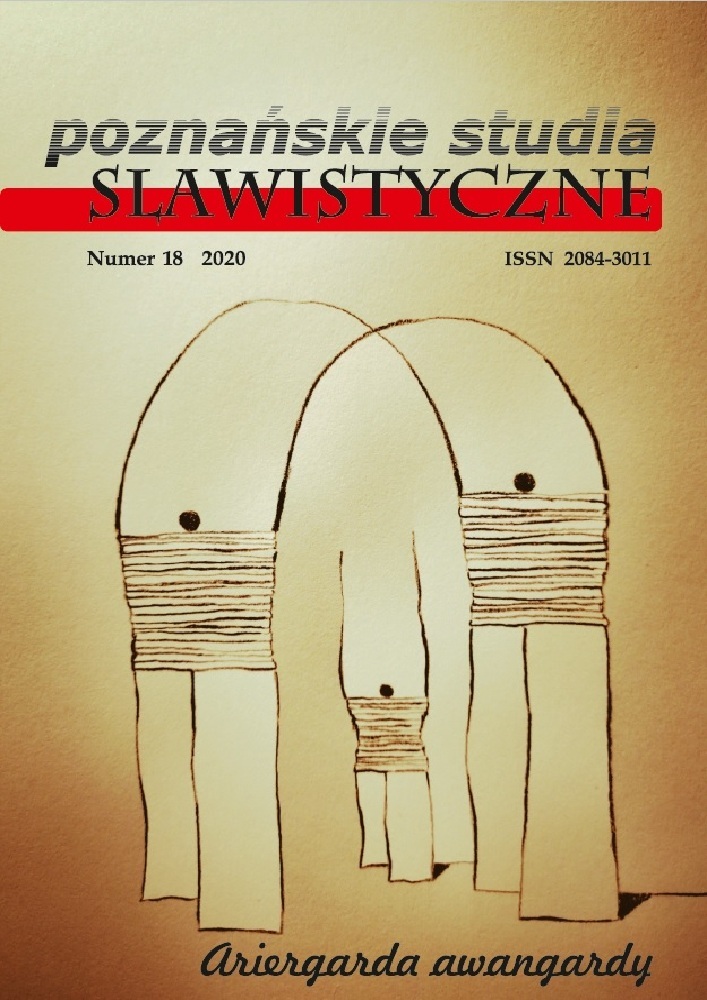Abstrakt
The article briefly presents a series of problems discussed in the dissertation entitled Свето и пропадљиво. Тело у српској хагиографској књижевности (Holy and Worldly. Body in Serbian Hagiographic Literature) by Smilja Marjanović-Dušanić. Dedicated to a wide professional and non-professional audience, the book in question is a significant scientific work since it refers not only to the historical, but also to the anthropological and culturological description related to the activity of decoding of such essential socio-cultural category like body. Considered as a highly complex phenomenon, body is a sign generated by the realm of various traditions and discourses which render different cultural modes or primary and secondary contexts; it might be also conceived as a distinctive signature of given time-space, community and cultural system. It will not be an exaggeration to say that the dissertation is an extremely interesting and indeed outstanding study of the subject which impresses with its high cognitive value and research rank. What is more, it offers a serious and objective view of the convoluted and multidimensional cultural phenomenon and identity construct.
Bibliografia
Assmann, A. (2013). Między historią a pamięcią. Antologia. Red. M. Saryusz-Wolska. Warszawa: Wydawnictwo Uniwersytetu Warszawskiego. https://doi.org/10.31338/uw.9788323514497.
Assmann, J. (2008). Pamięć kulturowa. Pismo, zapamiętywanie i polityczna tożsamość w cywilizacjach starożytnych. Przeł. A Kryczyńska-Pham. Red. R. Traba. Warszawa: Wydawnictwo Uniwersytetu Warszawskiego.
Bagliani, A.P. (2003). The Corpse in the Midde Ages: the Problem of the Division of the Body. W: The Medieval World. Red. P. Linehan, J.L. Nelson, London-New York: Routledge, s. 327–341.
Bagnoli, M., Klein, H.A., Mann, C.G., Robinson, J. (red.) (2011). Treasures of Heaven. Saints, Relics and Devotion in
Medieval Europe. New Haven–London: Walters Art Museum.
Bakke, M. (2000). Ciało otwarte. Filozoficzne reinterpretacje kulturowych wizji cielesności. Poznań: Wydawnictwo Naukowe UAM.
Belting, H. (2005). Image, Medium, Body: A New Approach to Iconology. „Critical Inquiry” no. 31/2, s. 302–319. https://doi.org/10.1086/430962.
Brown, P. (1988). The Body and Society. Men, Women, and Sexual Renunciation in Early Christianity. New York: Columbia University Press.
Brown, P. (2006). Ciało i społeczeństwo. Mężczyźni, kobiety i abstynencja seksualna we wczesnym chrześcijaństwie. Przeł. I. Kania. Kraków: Wydawnictwo Homini SC.
Coakley, S. (red.) (1997). Religion and the Body. Cambridge: Cambridge University Press.
Confino, A. (1997). Collective Memory and Cultural History: Problems and Method. „The American Historical Review” no. 102/5, s. 1386–1403. https://doi.org/10.2307/2171069.
Connerton, P. (1989). How Societies Remember. Cambridge: Cambridge University Press. https://doi.org/10.1017/CBO9780511628061.
Cox Miller, P. (2009). The Corporeal Imagination. Signifying the Holy in Late Ancient Christianity. Philadelphia: University of Pensilvania Press. https://doi.org/10.9783/9780812204681.
Cubitt, C. (2000). Narrative and Memory in the Cult of Early Anglo-Saxon Saints. W: The Uses of the Past in the Early Middle Ages. Red. M. Innes, Y. Hen. Cambridge: Cambridge University Press, s. 29–66. https://doi.org/10.1017/CBO9780511496332.003.
Curtius, E.R. (1997). Literatura europejska i łacińskie średniowiecze. Przeł. A. Borowski. Kraków: Universitas.
Drwięga, M. (2002). Ciało człowieka. Studium z antropologii filozoficznej. Kraków: Księgarnia Akademicka.
Erll, A. (2018). Kultura pamięci. Wprowadzenie. Przeł. A. Teperek, red. M. Saryusz- -Wolska. Warszawa: Wydawnictwo Uniwersytetu Warszawskiego. https://doi.org/10.31338/uw.9788323534174.
Freeman, C. (2011). Holy Bones, Holy Dust. How Relics Shaped the History of Medieval Europe. New Haven: Yale University Press.
Grajewski, Ł., Osiński, J., Szwagrzyk, A., Tański, P. (red.) (2015). Tematy modne w humanistyce. Studia interdyscyplinarne. Toruń: ProLog. Interdyscyplinarne Czasopismo Humanistyczne.
Hahn, C., Klein, H.A. (red.) (2015). Saints and Sacred Matter. The Cult of Relics In Byzantium and Beyond. Washington: Dumbarton Oaks Research Library and Collection.
Jakubowska, H. (2009). Socjologia ciała. Poznań: Wydawnictwo Naukowe UAM.
Joyce, R.A. (2005). Archeology of the body. „Annual Review of Anthropologyˮ no. 34, s. 139–158. https://doi.org/10.1146/annurev.anthro.33.070203.143729.
Le Goff, J., Truong, N. (2018). Historia ciała w średniowieczu. Przeł. I. Kania. Warszawa: Wydawnictwo Aletheia.
Łebkowska, A. (2011). Jak ucieleśnić ciało: o jednym z dylematów somatopoetyki. „Teksty Drugie”, nr 4, s. 11–27.
Łebkowska, A. (2017). Autorefleksyjność współczesnych nauk humanistycznych i co powinno z tego wynikać. „Teksty Drugie” nr 1, s. 244–252. https://doi.org/10.18318/td.2017.1.20.
Łebkowska, A. (2019). Somatopoetyka – afekty – wyobrażenia. Literatura XX i XXI wieku. Kraków: Wydawnictwo Uniwersytetu Jagiellońskiego.
Łeńska-Bąk, K., Sztandara, M. (red.) (2008). Doświadczane, opisywane, symboliczne. Ciało w dyskursach kulturowych. Opole: Wydawnictwo Uniwersytetu Opolskiego.
Mackiewicz, W. (2018). Ciało i polityczność. Koncepcja cielesności w filozofii Michela Foucaulta. Kraków: Universitas.
Matuszewski, R. (red.) (2012). Somatotes. Cielesność w ujęciu historycznym. Warszawa: Wydawnictwo Uniwersytetu Warszawskiego.
Nora, P. (1989). Between Memory and History: Les lieux de mémoire. „Representations” no. 26, s. 7–24. https://doi.org/10.2307/2928520.
Rachwał, T., Więckowska, K. (red.) (2012). (Nad)użycia ciała w kulturze. Toruń: Wydawnictwo UMK.
Sekita, K. (2012). „I w imię mięsa…” – zamiast wstępu. W: Somatotes. Cielesność w ujęciu historycznym. Red. R. Matuszewski. Warszawa: Wydawnictwo Uniwersytetu Warszawskiego, s. 7–10.
Shilling, H. (2010). Socjologia ciała. Przeł. M. Skowrońska. Warszawa: Wydawnictwo Naukowe PWN.
Szpakowska, M. (red.) (2008). Antropologia ciała. Zagadnienia i wybór tekstów. Warszawa: Wydawnictwo Uniwersytetu Warszawskiego.
Marjanović-Dušanić, S. (1997). Vladarska ideologija Nemanjića: diplomatička studija. Beograd: Srpska Književna Zadruga.
Licencja
Prawa autorskie (c) 2020 Izabela Lis-Wielgosz

Utwór dostępny jest na licencji Creative Commons Uznanie autorstwa – Bez utworów zależnych 4.0 Międzynarodowe.

